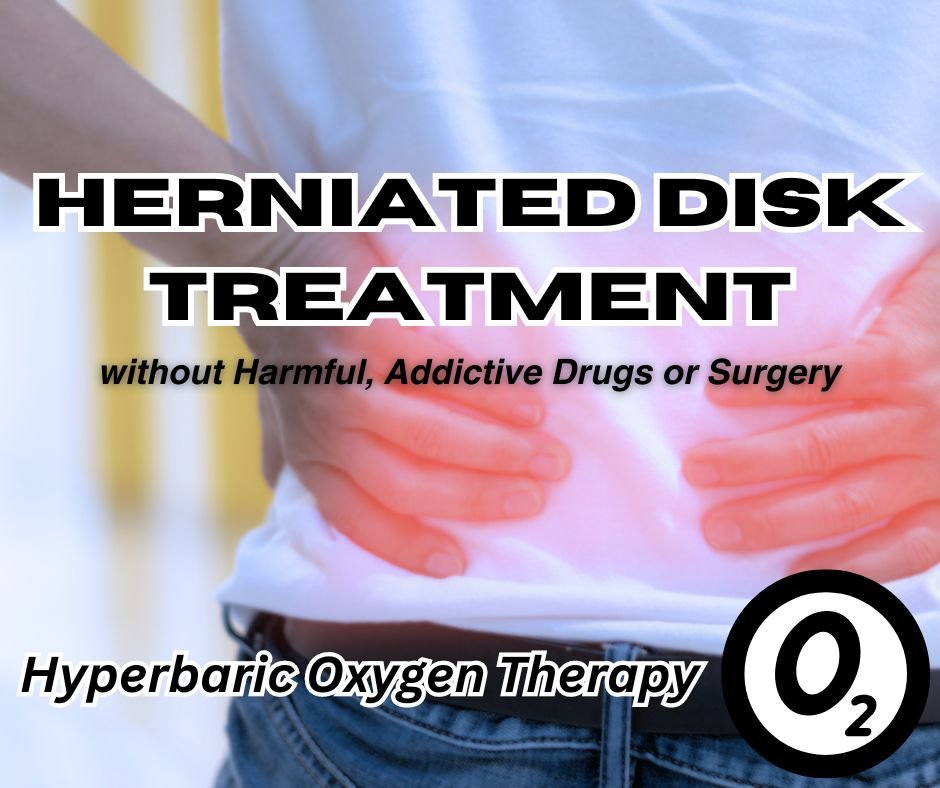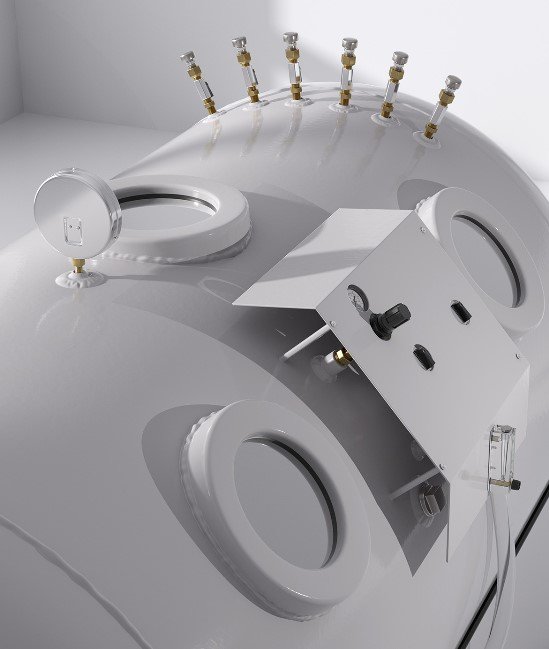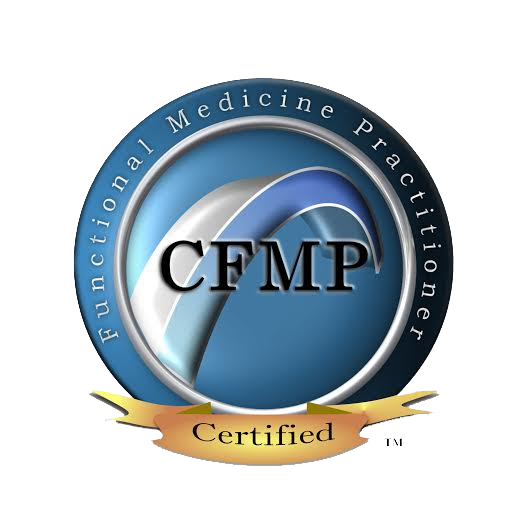
Living with a herniated disc can be painful, the good news is that surgery isn’t always the only option. This guide explores non-surgical treatments for herniated discs, such as Cox flexion/Distraction and Hyperbaric Oxygen Therapy (HBOT).
This article gives you information on how to manage herniated discs more effectively. It is based on research and Dr. Kilcup’s 30 years of experience in treating them in Phoenix, Arizona.
INNOVATIVE TREATMENT APPROACH
Dr. Kilcup has been at the forefront of non surgical herniated disc treatment. His approach combines the highly effective Cox Flexion/Distraction technique with Hyperbaric Oxygen Therapy (HBOT). This innovative approach has consistently delivered extraordinary results, surpassing other available treatments in the field.
HERNIATED DISC CHIROPRACTIC TREATMENT TECHNIQUES
When it comes to addressing herniated discs, chiropractic care offers a range of effective treatment techniques. Chiropractors specializing in spinal health, like Dr. Kilcup, utilize specific methods to alleviate pain and promote healing in individuals with herniated discs. Some of the key chiropractic treatment techniques for herniated discs include:
- Cox Flexion/Distraction Technique: This specialized chiropractic technique involves gentle traction and flexion of the spine. It targets the affected disc, reduce pressure on the nerves, and promote spinal health. Dr. Kilcup’s expertise in this technique has been instrumental in providing relief to patients with herniated discs.
- Spinal Adjustments: Chiropractors may perform spinal adjustments to realign the spine, improve mobility, and reduce discomfort associated with herniated discs. These precise adjustments help restore proper spinal function and alleviate symptoms.
- Therapeutic Exercises: Chiropractors often prescribe specific exercises to strengthen the muscles supporting the spine, improve flexibility, and enhance overall spinal health. These exercises can complement chiropractic adjustments and promote long-term recovery from herniated disc issues.
- Lifestyle Recommendations: Chiropractors may offer guidance on lifestyle changes, ergonomic adjustments, and posture correction to support the healing process for herniated discs.
Combining these chiropractic treatment techniques, patients experience significant improvements in their herniated disc symptoms and overall quality of life.
People looking for non-surgical options and good chiropractic care for herniated discs can benefit from trying specialized treatments. These approaches can provide a well-rounded way to manage and treat this common back problem.
Cox Flexion/Distraction Technique
Dr. Cox created the Cox Flexion/Distraction technique to help treat herniated discs. It has been very successful.
This method gently stretches and bends the spine to help the affected disc and ease pressure on the nerves. The method is safe and precise. It doesn’t involve surgery and has had great results in helping patients with spine problems.
Watch the video to see Dr. Cox demonstrate the Cox Flexion/Distraction technique
This technique, coupled with the therapeutic benefits of Hyperbaric Oxygen Therapy, represents a holistic and unparalleled approach to herniated disc treatment.
Hyperbaric Oxygen Therapy (HBOT): A Breath of Fresh Air
How HBOT Works:
Hyperbaric Oxygen Therapy (HBOT) is a painless and safe treatment option for various medical conditions, including disc herniations. During HBOT sessions, patients enter a chamber where the air pressure is increased to three times higher than normal air pressure. Despite the increased pressure, the therapy is painless as patients can relax, read, or even nap during the session. The process of breathing pure oxygen at elevated pressure levels is non-invasive and does not involve any discomfort.
In this pressurized environment, your lungs can gather more oxygen. This extra oxygen triggers the secretion of growth factors and stem cells, thereby encouraging healing.
Additionally, HBOT has a strong safety profile when administered by trained professionals in a controlled environment. Patients can rest assured that HBOT is a well-tolerated and safe treatment modality for managing disc herniations.

Hyperbaric Oxygen Therapy (HBOT) Greatest Benefits of HBOT for Disc Herniations:
Hyperbaric Oxygen Therapy (HBOT) has shown significant benefits in treating disc herniations. Some of the advantages of HBOT for disc herniations include:
Improved Healing: HBOT enhances the body’s natural healing processes by increasing the amount of oxygen in the blood. This boost in oxygen levels helps repair damaged tissues and promotes faster recovery from disc herniations.
HBOT enhances collagen healing in the disc by:
- Increases oxygen levels in the blood
- Promotes tissue repair
- Supports the body’s natural healing processes
Reduced Inflammation: HBOT has anti-inflammatory effects, which can help reduce inflammation around the herniated disc. By decreasing inflammation, HBOT can alleviate pain and discomfort associated with disc herniations.
Enhanced Oxygen Delivery to Nerves: HBOT enhances oxygen delivery to damaged nerves, promoting repair and regrowth.
Reduced Pain: It alleviates nerve pain, numbness, and other symptoms from herniated discs.
Hyperbaric Oxygen Therapy (HBOT) plays a crucial role in improving healing and reducing inflammation in disc herniations.
This therapy boosts the body’s natural healing processes. Studies (Stoller 2015), suggest that it could be helpful in mitigating inflammation and helping tissue repair. Thus making it a significant element in the treatment of herniated discs.
Generally patients experience around a 40% faster recovery with HBOT.
REVOLUTIONARY DUAL APPROACH
Using Cox Flexion/Distraction and HBOT together has consistently led to great results. Patients recover faster and have long-lasting relief from herniated disc symptoms.
Dr. Kilcup unique way of treating herniated discs using HBOT and Cox Flexion/Distraction is very specialized. This unique combination sets Dr. Kilcup’s office apart from other medical offices. Patients get the best comprehensive and effective non-surgical treatment options.
PROVEN RESULTS
In Dr. Kilcup’s extensive experience spanning three decades, the Cox Flexion/Distraction technique has consistently provided relief to individuals suffering from herniated discs. This approach not only alleviates pain but also facilitates the body’s natural healing processes.
Cox Flexion/Distraction is a non-invasive chiropractic technique specifically designed for spinal decompression. This gentle, controlled stretching of the spine can significantly alleviate the pain associated with herniated discs. Studies, (Gudavalli et al. 2016), have demonstrated the efficacy of this method in reducing disc herniation symptoms.
Hyperbaric Oxygen Therapy (HBOT) has been studied for its potential in healing injuries. Studies have found that HBOT can help repair tissue and reduce inflammation in muscle and bone conditions. A study by Stoller (2015) indicated the potential of HBOT in disc injuries by:
- Reducing inflammation
- Promoting tissue repair

UNDERSTANDING HERNIATED DISCS
Herniated discs are also known as a slipped or ruptured discs. Disc herniations happen when the soft material inside the disc comes out through the tough outer layer. This can cause pain, numbness, and weakness.
Inflammation is a Big Problem
The spinal disc can be compared to a jelly donut. The disc’s “jelly” is referred to as the nucleus pulposus. As we grow older, the jelly substance gradually changes from watery consistency to something more akin to toothpaste.
When this jelly gets out of the disc it creates a missive inflammatory response. Much of the pain associated with the disc herniations are due to this inflammation.
This inflammatory response is so intense that it causes the disc bulge to swell. The swollen injured disc will cause more nerve pressure and pain because it’s bigger and pressing harder on the nerve.
Once this inflammatory process is over it is possible for the pain and nerve pressure to be totally gone.
NSAIDs Prevent Disc Healing
Nonsteroidal anti-inflammatory drugs (NSAIDs) are commonly used to alleviate pain and reduce inflammation. However, prolonged use of NSAIDs can have detrimental effects on collagen healing.
NSAIDs work by inhibiting enzymes called cyclooxygenases (COX). These enzymes play a crucial role in the production of prostaglandins that promote inflammation and pain. While reducing inflammation, NSAIDs can also interfere with the normal healing process of collagen.
Collagen is a vital protein that provides structure and support to tissues, including those involved in disc herniations. By disrupting collagen synthesis and remodeling, NSAIDs may impair the body’s ability to repair damaged tissues effectively.
Hyperbaric Oxygen Therapy is better than Nonsteroidal anti-inflammatory drugs (NSAIDs)
1. Healing Mechanism: HBOT enhances the body’s natural healing processes by increasing oxygen levels in the blood. This boost in oxygen levels helps repair damaged tissues and promotes faster recovery from conditions like disc herniations. NSAIDs inhibit inflammation-promoting enzymes, interfering with collagen’s role in tissue repair.
2. Collagen Healing: Prolonged use of NSAIDs can have detrimental effects on collagen healing. Collagen is essential for providing structure and support to tissues involved in disc herniations. By interfering with collagen synthesis, NSAIDs may hinder the body’s ability to repair damaged tissues properly. In contrast, HBOT promotes tissue repair and collagen healing by enhancing oxygen delivery to damaged areas.
3. Reduced Inflammation: HBOT has anti-inflammatory effects, which can help reduce inflammation around herniated discs. By decreasing inflammation, HBOT can alleviate pain and discomfort associated with disc herniations. NSAIDs make it harder for the body to heal damaged tissues because they disrupt collagen synthesis and remodeling.
HBOT offers a healthy approach to inflammation by:
- Promoting tissue repair
- Reducing inflammation
- Supporting the body’s natural healing processes
This makes HBOT a preferable option over NSAIDs for conditions like disc herniations.
Bulging Disk vs. Herniated Disk: Understanding the Difference
Herniated disc: Both bulging and herniated discs are spinal disc issues, but they have distinct differences:
Bulging Disc: A bulging disc happens when the disc protrudes outwards and extends beyond its normal boundaries. It is often considered a precursor to a herniated disc. The outer layer of the disc remains intact, but the disc bulges outwards, potentially causing pressure on nearby nerves.
Symptoms of a bulging disc may include localized pain, numbness, tingling, or weakness in the affected area.
Herniated Disc: A herniated disc occurs when the inner material of the disc (nucleus pulposus) leaks out through a tear or rupture in the outer layer (annulus fibrosus).This condition is also known as a slipped or ruptured disc.
A herniated disc can lead to more severe symptoms due to the irritation or compression of spinal nerves. Herniated disc symptoms can include radiating pain, numbness, tingling, or weakness that can extend into the arms or legs.
In summary, a bulging disc involves the disc protruding. A herniated disc involves the inner material leaking out through a tear in the outer layer. Understanding the key differences between these two conditions is crucial for accurate diagnosis and appropriate treatment planning.
Causes of a Herniated Disc
A disc herniation, is caused by the inner material of the disc leaking out through a tear or rupture in the outer layer.
This leakage can result from various factors such as
- Aging
- Wear and tear on the spine
- Repetitive movements
- Lifting heavy objects incorrectly
- Sudden trauma to the spine
As we age, the spinal discs lose water content and flexibility, making them more prone to herniation. Additionally, poor posture, obesity, and genetic inclinations can also contribute to the development of disc herniations. The protrusion of the disc material irritates or compress nearby spinal nerves. This causes symptoms like radiating pain, numbness, tingling, or weakness in the affected area.
Phoenix, Arizona: A Hub of Healing
Located in Phoenix, Arizona, Dr. Kilcup’s practice has been a cornerstone of non-surgical disc herniation treatment for over 30 years. The excellent reviews from satisfied patients highlight the effectiveness of his methods and the positive impact on their lives.
If you are searching for effective “herniated disc treatment near me”, consider exploring non-surgical treatments such as Cox Flexion/Distraction and Hyperbaric Oxygen Therapy (HBOT). These innovative approaches, championed by Dr. Kilcup, have shown remarkable success in providing relief and promoting healing for individuals dealing with herniated discs.



